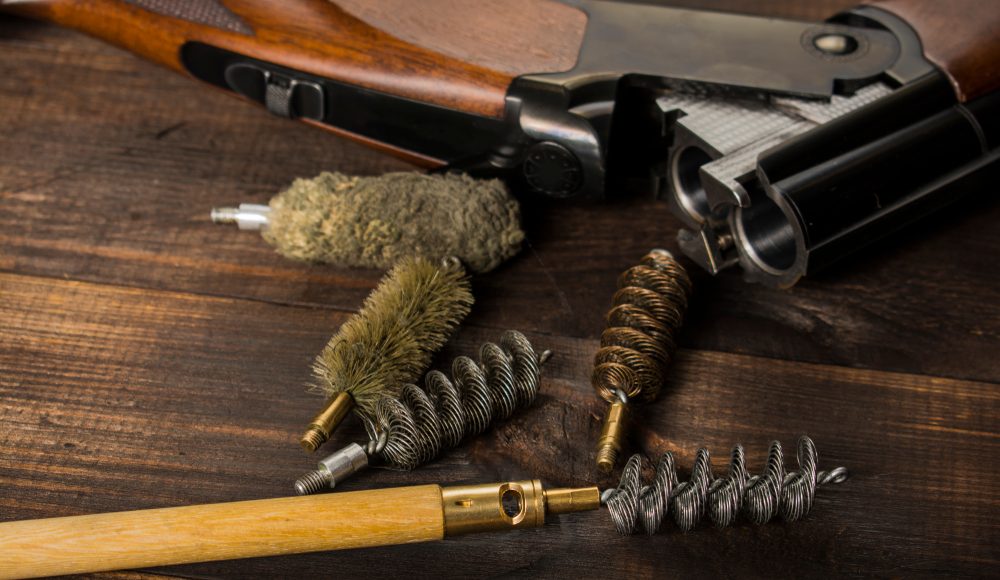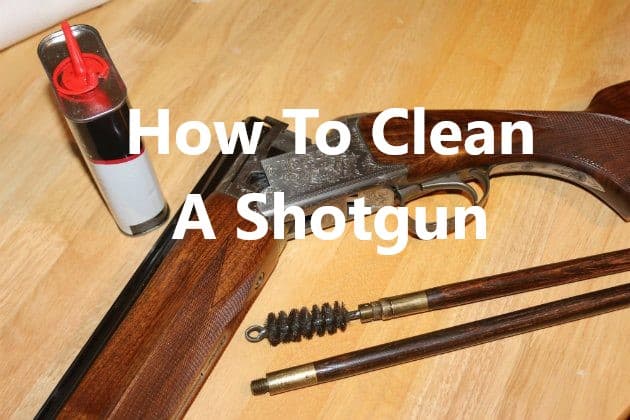In any form of hunting or shooting activity, cleaning a shotgun is an important aspect of appropriate gear maintenance. The type of shotgun used—pump, semi automatic, side-by-side, over/under, or even single shot—can affect several aspects of the operation.
Whether you’re doing a field stripping or a thorough disassembly, the steps for cleaning your shotgun are different.
How To Clean A Shotgun Quickly
The basic rule of gun care is to wipe off your firearm every time you shoot. It’s the most effective approach to prevent rust and corrosion while also ensuring that your rifle is constantly clean. Let’s face it: you’ll rarely get much done if you wait for those “deep cleaning” periods. After a hard day of hunting, we simply don’t always have the stamina to pull firearms apart.
In your range bag, have a microfiber or other soft cloth as well as gun oil. After you’ve finished shooting, wipe clean all exterior surfaces with a lightly oiled cloth. Particular attention should be paid to the barrel and vent rib. Because the vent rib is the first to rust, run a bead of oil down it and rub it into the ribbing. Clean the trigger, receiver, and bolt with a few drops of oil. After that, function-test the bolt to see if it works in the oil.
How To Thoroughly Clean A Shotgun
Sometimes you need something more than a quick cleaning. A deep clean requires disassembling the firearm and becoming familiar with all of its components. Don’t worry, shotguns aren’t difficult to use. Make sure to clean your gun thoroughly once or twice a year, or after numerous boxes have passed through it. When residue build-up becomes obvious, a thorough scouring is needed.
Remove the magazine tube from pumps and semi-autos first. Because the spring inside is very tight, go slowly so it doesn’t jump out like a snake in a can. The spring may or may not come out with the plug, but make sure it is also removed. After that, you can remove the barrel by pulling it straight out of the receiver.
After that, if there is a bolt handle, pull it out and remove the bolt. Using a small screwdriver, push through the pins that keep the trigger group in place, then pull out the trigger assembly and hammer. If your shotgun uses a gas system, remove all of the springs, pistons, and other parts and lay them out in the correct sequence.
When cleaning specific parts, don’t use too much oil at first. More is not better in this case since it draws dirt. Only apply drops of oil directly to moving parts of a pistol while cleaning it. Everything else should be wiped down with a lightly oiled cloth.
After that, lightly oil a bore snake and run it into the barrel until it clears all the material. Remove the choke and give the snake one last run through. If the choke threads are gritty, use your thumb to push a cloth against the threads and run it in the direction of the threads to remove the debris.
If you wipe instead of moving about, debris may be left behind. Apply a small amount of oil or grease to the threads. Wrap another cloth around the threading on the choke and spin it in your palm using the same manner.
Wipe down the bolt and get into the nooks and crannies with a Q-tip. Scrub out the carbon build-up with a brush if it’s very dirty. To finish, lightly brush it with oil.
Eliminate all carbon and debris from inside the receiver and the trigger group with your cleaning cloth, brush, and Q-tips.
Examine the magazine tube for flaws. Run the bore snake through it if it’s filthy. The mag tube is commonly overlooked, however it collects dirt and feeds it into your system if you load bullets that strike the ground. Reassemble the shotgun, do a function test, and store it in your safe.
How Often Should You Clean Your Shotgun?
Even if you haven’t fired a shot, you must clean and lubricate your gun every time you return home after a hunt. It’s the only way to keep it from rusting. Even if you only fired a few shots, the gases will have contaminated the barrels, action, and other mechanical components.
Furthermore, it makes no difference if you’ve gone gun hunting for a few minutes or an entire day.
Fingerprints from sweaty palms, moisture from rain or snow, splashes of muck, and even a few drops of dew from a bush will have come into touch with your rifle in both circumstances, so you can’t just leave it alone.
You’ll discover dust from the ground or small bits of vegetation from the woods have gotten into your pistol, so you’ll need to strip it down and clean and lubricate the various parts of the rifle using a logical yet simple technique. If you want to find out more about gun cleaning please check our review on the best bore cleaner.
Should You Use A Solvent Or Oil?
When it comes to cleaning your gun, you may be unsure whether to use a gun, solvent, or oil.
When it comes to cleaning your gun, gun oil is occasionally recommended. This is due to the fact that it is light and meant to be gentle on the gun’s wooden parts.
However, using gun oil products that include cleansers and lubricants in their compositions is even better. Powder accumulation will be prevented by the solvent in them.
A gun cleaning solvent loosens residue and restores the appearance of your firearm. You should use a cleaner or solvent product when disassembling your pistol to clean it.
After that, you can apply gun grease to finish the job.
Because of how it lubricates and protects your pistol from rust, gun oil differs from a cleaning product. After cleaning your gun, apply gun oil to preserve it in good condition.
If you lubricate your gun before cleaning it, or instead of cleaning it, grease will build up, attracting even more debris and grime. This will have a negative impact on the performance of your pistol over time.

Hi, I am Jerry Miculek and I am experienced firearms and optics expert. Guns are not just a hobby for me, they are my passion and life. You can learn more about me on my About page.
